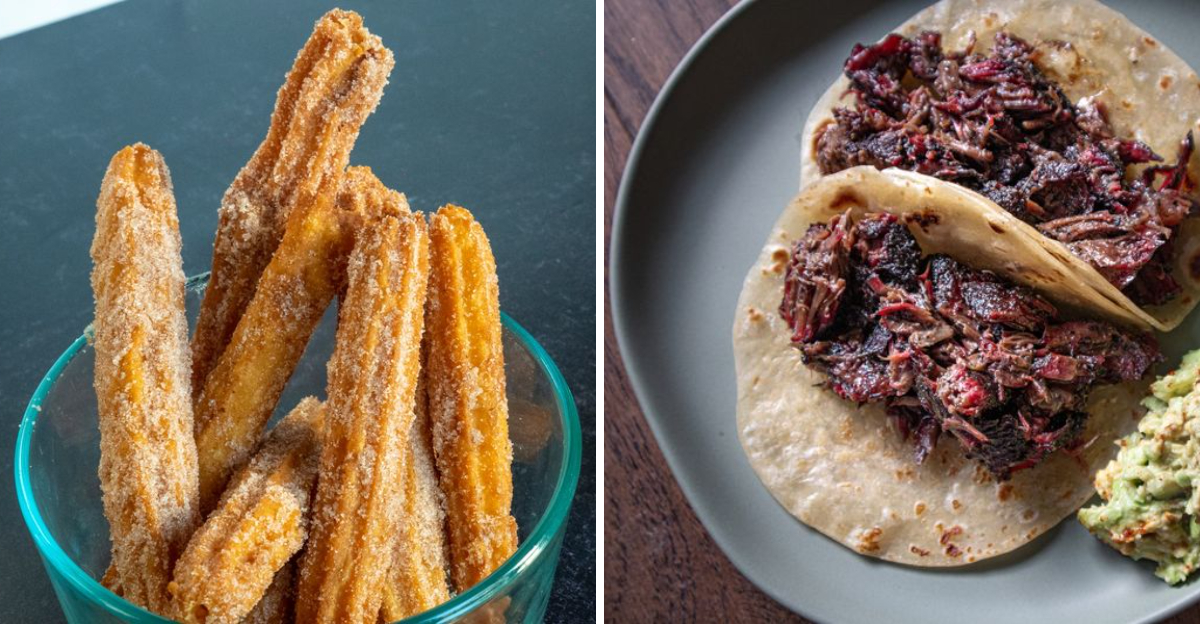13 Texas Foods Outsiders Always Mispronounce (And Texans Can’t Stop Correcting Them)

If you’ve ever ordered food in Texas and received a raised eyebrow instead of your meal, you’ve stumbled into a pronunciation minefield. Texas cuisine has its own language, shaped by diverse cultural influences and regional dialects.
Next time you’re in the Lone Star State, avoid these common food pronunciation blunders that make locals cringe faster than putting ketchup on brisket.
1. Brisket: Not BRIS-ket, But BRIS-set
Nothing makes a pitmaster’s eye twitch faster than hearing “BRIS-ket” from an out-of-towner. The proper Texas drawl softens that harsh ‘k’ sound into something closer to “BRIS-set.”
This BBQ staple deserves respect right down to how you say its name. Many Texans claim you can identify a barbecue tourist by pronunciation alone!
2. Kolache: It’s KUH-lə-chee, Partner
Those Czech-inspired pastry pockets cause linguistic chaos across state lines. While outsiders butcher it as “KO-la-chee,” true Texans know it’s “KUH-lə-chee” or “KAW-lah-chee.”
West, Texas (yes, that’s a town) celebrates these fruit or meat-filled treasures annually. Pronounce it correctly and you might just get an approving nod from the grandma behind the bakery counter.
3. Sopapilla: Say So-pa-PEE-yuh
These honey-drizzled fried pillows of heaven aren’t “so-pa-PILL-uh” no matter what your autocorrect suggests. The authentic pronunciation flows as “so-pa-PEE-yuh” with that lovely Spanish double-L sound.
Legend has it you can measure a Texan’s patience by how many times they’ll correct you before sighing and just pointing at the dessert menu. Sweet mercy indeed!
4. Barbacoa: Not Bar-buh-COA
Weekend taquerias across Texas serve this tender meat delicacy, but tourists mangle it as “barBAY-coh-ah.” Real Texans know it’s “bar-buh-KOY-uh” with emphasis on that middle syllable.
Traditionally made from slow-cooked cow head, this breakfast staple has fueled Sunday mornings for generations. Your pronunciation reveals whether you’re a barbacoa veteran or just passing through!
5. Fajita: The ‘J’ Is Silent
Hollywood movies have convinced outsiders it’s “fa-JEE-ta,” but walk into any Tex-Mex joint and you’ll hear the proper “fa-HEE-ta” with that soft Spanish ‘j’.
These sizzling platters of marinated skirt steak originated with vaqueros who transformed tough cuts into deliciousness. Your server might forgive a mispronunciation, but the abuela in the kitchen? Not a chance!
6. Queso: Drop That ‘W’ Sound
When Texans hear “KWAY-so” instead of “KEH-so,” they physically recoil. This liquid gold deserves better than mangled Spanglish!
Though technically just meaning “cheese,” in Texas it specifically refers to that magical melted dip that appears before every meal. Some locals swear they can spot an out-of-stater by their queso pronunciation before they even reach for a chip.
7. Menudo: Emphasis On The Middle
This traditional hangover cure triggers pronunciation panic in visitors who say “MEN-oo-doh” instead of the proper “meh-NEW-doh.” The middle syllable deserves that emphasis!
Made with tripe and hominy in a rich red chile broth, this weekend specialty has saved countless Sunday mornings. Texans believe if you can properly pronounce it, you’ve earned the right to enjoy its restorative powers.
8. Pan de Campo: The Cowboy Bread
Campfire cooking created this South Texas staple, but outsiders butcher it as “pan de KAM-po” instead of “PAN deh KAHM-po.” The official state bread deserves proper enunciation!
Vaqueros cooked this simple bread in cast iron over open flames during cattle drives. Today, Rio Grande Valley families still debate whose grandmother’s recipe reigns supreme – but they all agree on how to say it.
9. Tamale: Never Say ‘TAM-uh-lee’
Holiday traditions in Texas revolve around these corn husk-wrapped treasures, but nothing makes a local flinch faster than hearing “TAM-uh-lee” instead of “tah-MAH-ley.”
Christmas kitchen gatherings often feature assembly lines of family members spreading masa and filling husks. The singular form is actually “tamal,” but most Texans will forgive that oversight if you nail the pronunciation.
10. Churro: Roll That ‘R’
These cinnamon-sugar coated pastry sticks aren’t “CHUR-roe” with a hard American ‘r’. Texans give them the proper Spanish treatment: “CHOOR-oh” with a gentle rolled ‘r’.
Find them at every festival and fair across the state, often served with dulce de leche or chocolate. Your pronunciation might determine whether you get the freshest batch or yesterday’s leftovers!
11. Carne Guisada: The ‘Gui’ Trips Everyone
This hearty meat stew confounds tourists who say “GEYE-sah-dah” instead of the correct “gee-SAH-duh.” That middle syllable trips up even the most confident visitors!
Served with warm tortillas and found in taquerias statewide, this slow-cooked comfort food has sustained generations. Texans measure restaurant authenticity by their carne guisada – both taste and how staff pronounce it.
12. Pozole: Not Poz-OLE
While outsiders might say “poz-OH-lee,” Texans maintain it’s “poh-SOH-lay” with that accent on the middle syllable. This hominy and meat stew deserves proper respect!
Family gatherings across South Texas feature massive pots of this celebratory dish. The red, white, or green varieties all share one thing in common – they’ll taste better if you pronounce them correctly when ordering.
13. Chile Con Queso: Three Words, Triple Trouble
The full name of Texas’ beloved cheese dip creates a pronunciation obstacle course. Visitors stumble through “chee-LAY con KWAY-so” while Texans smoothly deliver “CHEE-leh con KEH-so.”
Though most locals shorten it to just “queso,” the full name appears on menus statewide. Some Tex-Mex restaurants have reportedly given pronunciation discounts to those who nail it perfectly on the first try!
